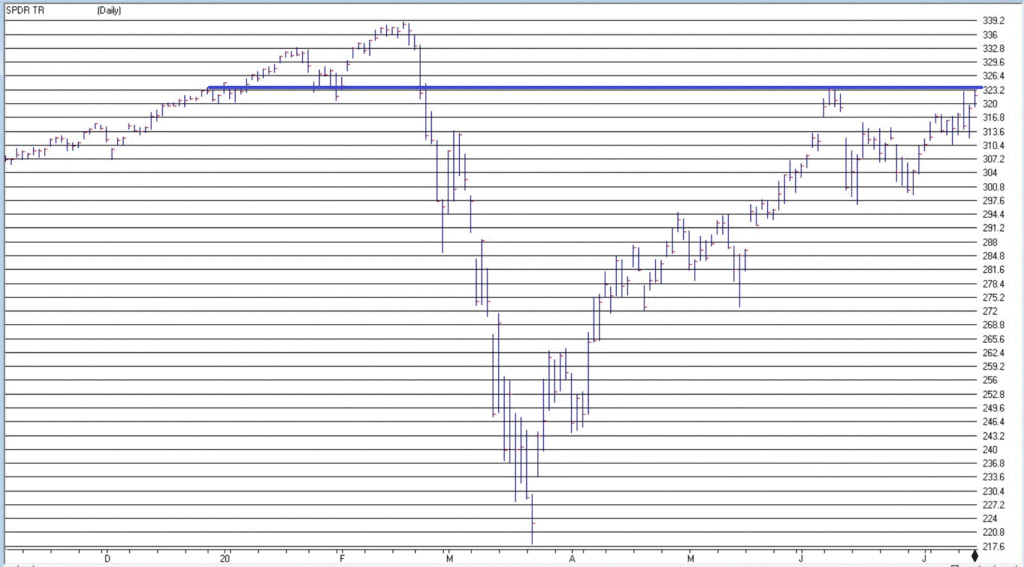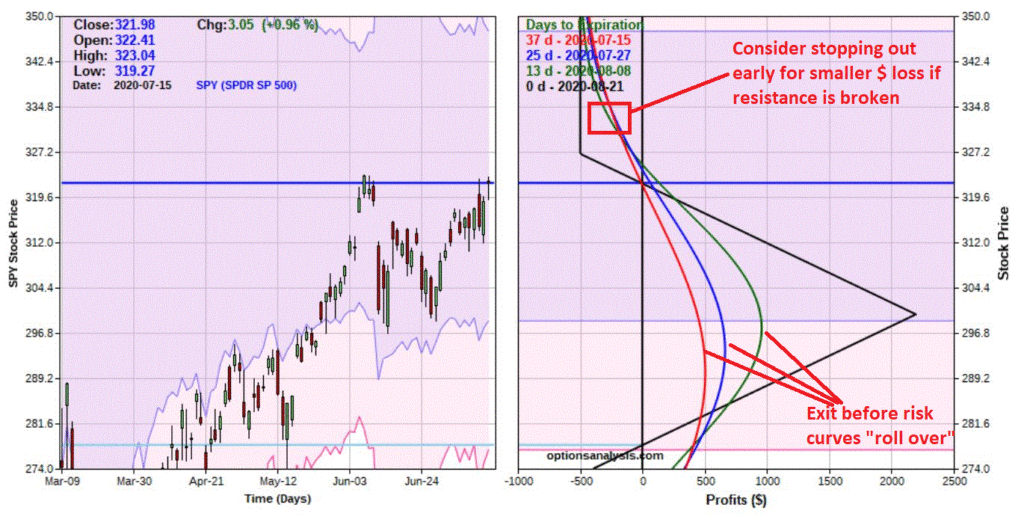In the long run, fighting “the trend” is a bad way to go about achieving investment success. But even the strongest of trends have “moments of doubt” along the way. And in my book, “trading” is different than “investing”.
Jay’s Trading Maxim #47: “Investing” is about putting money to work in the hope that it will grow over time. “Trading” is about making money right now.
At least that’s one way of looking at it.
I also need to emphasize that the example trade I am going to discuss is NOT a “recommendation.” When I write about “counter-trend” trades I have a nasty history of picking the wrong time or the wrong example. You have been warned.
But sometimes a trader (NOT an investor) senses that something is getting “overdone” and is due to correct and wants to make a play. The key is to make a play that:
*Offers either, a) significant profit potential, and/or, b) a high probability of success
*Involves a small, manageable risk
An Example in the Stock Market
Are we in a bull market, a bear market of a correction? Debate that one to your hearts content, but know that there will be no consensus. But here are a few things we can state:
*The market has been in a strong uptrend for a number of months (so for now the primary trend is “Up”)
*Some of the major indexes sorta, kinda “bumped their heads” in the past several weeks (so there is an obvious resistance level to use as a benchmark)
*August through October is the seasonally weakest 3 months of the year
*Volatility (specifically the VIX Index) often “spikes” between July and October
So, let’s “take the (hypothetical) plunge” and consider playing the short side.
Ticker SPY
In Figure 1 we see that ticker SPY (an ETF that tracks the S&P 500 Index) recently bumped up against a potential resistance level. Is this a good reason to play the downside? That is for each individual trader to decide. I am not suggesting anything one way or the other. The question we are trying to answer here is, “is there a way to play the short side without risking our shirt?”

Figure 1 – Ticker SPY (Courtesy AIQ TradingExpert)
Selling short 100 shares is always an option, but requires margin money and entails unlimited risk – for the record, I am not a fan of unlimited risk trades. So, let’s consider an alternative using an option strategy known as the “Out-of-the-money butterfly spread” – or OTM butterfly for short.
The Hypothetical Example Trade
This trade involves:
*Buying 1 SPY Aug21 327 put @ $11.53
*Selling 2 SPY Aug21 300 puts @ $3.93
*Buying 1 SPY Aug21 273 puts @ $1.32
The particulars for this trade appear in Figure 2 and the risk curves in Figure 3

Figure 2 – SPY OTM butterfly (Courtesy www.OptionsAnalysis.com)

Figure 3 – SPY OTM butterfly risk curves (Courtesy www.OptionsAnalysis.com)
This is a play a trader might consider if they expected that SPY was going to drift lower in the next month (if one expected a “crash” or for SPY to remain essentially unchanged then a different trade would be warranted).
Let’s take a closer look at the details and potential outcomes:
*The maximum risk on this trade is $499 and would occur if this trade is held until expiration and SPY is above $327 or below $273. So, the good news in terms of risk is that we have a lot of flexibility and can act to reduce risk and NOT experience the maximum risk if SPY plummets or soars
*For example, if SPY rallies to say $333 between now two weeks prior to expiration:
-Our reason for even considering this trade – i.e., overhead resistance – is broken so there is a good reason to “pull the plug”
-By exiting early, we may be able to limit our loss to the $200-$250 range
*On the downside, it is important to note that if SPY did by chance drop below $300 a share, the risk curves would “roll over” back to the downside. So:
-this is NOT a “set it and forget it” type of trade
-one MUST be prepared to exit or adjust the trade if SPY approaches $300 a share
*While the maximum profit potential is $2,201, you should NOT focus on that number. That would occur ONLY if SPY closed at exactly $300 on August 21st. As a result, a trader must think in advance about what type of dollar profit level, and/or price level for ticker SPY would prompt them to take a profit by either exiting or adjusting the trade.
Summary
Do not interpret any of this as me “recommending” that you immediately make a bearish play in ticker SPY. It’s price could easily already be trading above the supposed “resistance” level by the time you read this.
The trade above is simply an example of one way to make a relatively low dollar risk trade (bet?) on a counter trend situation when your “trader sense” tells you its time.
See also Jay Kaeppel Interview in July 2020 issue of Technical Analysis of Stocks and Commodities magazine
See also Jay’s “A Strategy You Probably Haven’t Considered” Video
See also Video – The Long-Term…Now More Important Than Ever
Jay Kaeppel
Disclaimer: The information, opinions and ideas expressed herein are for informational and educational purposes only and are based on research conducted and presented solely by the author. The information presented represents the views of the author only and does not constitute a complete description of any investment service. In addition, nothing presented herein should be construed as investment advice, as an advertisement or offering of investment advisory services, or as an offer to sell or a solicitation to buy any security. The data presented herein were obtained from various third-party sources. While the data is believed to be reliable, no representation is made as to, and no responsibility, warranty or liability is accepted for the accuracy or completeness of such information. International investments are subject to additional risks such as currency fluctuations, political instability and the potential for illiquid markets. Past performance is no guarantee of future results. There is risk of loss in all trading. Back tested performance does not represent actual performance and should not be interpreted as an indication of such performance. Also, back tested performance results have certain inherent limitations and differs from actual performance because it is achieved with the benefit of hindsight.

